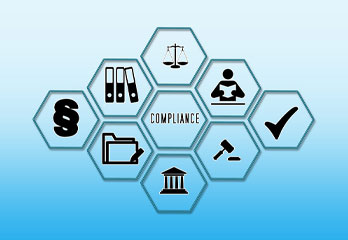In an era defined by rapid technological advancement and relentless market disruption, businesses are under constant pressure to innovate, adapt, and deliver value at unprecedented speeds. Amidst this dynamic landscape, Agile methodology emerges as a beacon of efficiency and adaptability—a transformative approach to project management that empowers teams to navigate uncertainty with confidence and drive results that exceed expectations.
At its core, Agile methodology represents a departure from traditional, linear project management approaches. It embraces change as a natural part of the development process, prioritizing iterative development cycles, cross-functional collaboration, and continuous feedback loops. Agile isn't just a methodology; it's a mindset—a way of thinking and working that enables teams to respond to evolving market needs with agility and resilience.
What is Agile Methodology?
Agile methodology is a project management and software development approach that emphasizes flexibility, collaboration, and customer satisfaction. Unlike traditional methodologies, which follow a linear, sequential process (often referred to as the Waterfall model), Agile methodology embraces an iterative process, allowing teams to deliver work in small, consumable increments. This iterative approach enables teams to gather feedback frequently and make necessary adjustments throughout the project lifecycle.
Why Agile?
Agile methodology isn't just a buzzword; it's a game-changer. By breaking down projects into smaller, manageable chunks known as sprints, Agile empowers teams to adapt to change quickly, deliver high-quality results, and foster continuous improvement.
Understanding Agile Methodology
At its core, Agile methodology is all about iterative development, where projects are broken down into smaller, manageable increments known as sprints. This approach allows teams to deliver value to customers faster while remaining flexible enough to respond to feedback and changing requirements.
Agile Development Methodology Features
1. Iterative Development Cycles: Agile projects are characterized by short, iterative development cycles known as sprints, enabling rapid prototyping and feedback iteration.
2. Cross-Functional Teams: Agile teams are composed of individuals with diverse skill sets, fostering creativity and innovation through interdisciplinary collaboration.
3.Continuous Feedback and Adaptation: Agile embraces change as a natural part of the development process, encouraging teams to iterate and evolve based on stakeholder feedback.
4. Emphasis on Customer Collaboration: Agile places customers at the center of the development process, ensuring that their needs and preferences are continuously integrated into the product.
5. Flexible Response to Change: Agile teams prioritize adaptability over adherence to rigid plans, allowing them to pivot quickly in response to changing market conditions.
Benefits of Agile Methodology
The adoption of Agile methodology offers a myriad of benefits for businesses seeking to stay ahead of the curve:
1. Enhanced Flexibility and Adaptability: Agile empowers teams to respond quickly to changing market dynamics and stakeholder requirements, minimizing risks and maximizing opportunities.
2. Faster Time-to-Market: By prioritizing incremental delivery and continuous integration, Agile accelerates the pace of innovation, allowing businesses to seize market opportunities more rapidly.
3. Improved Product Quality and Customer Satisfaction: Agile's focus on iterative development and customer feedback ensures that products meet or exceed customer expectations, driving loyalty and retention.
4. Increased Transparency and Collaboration: Agile fosters a culture of transparency and accountability, enabling stakeholders to actively participate in the development process and make informed decisions.
5. Greater Alignment Between Business Goals and Development Efforts: Agile aligns development efforts with business objectives, ensuring that resources are allocated strategically to deliver maximum value to stakeholders.
Significance of Agile Methodology for Businesses
In today's hyper-competitive business landscape, Agile methodology isn't just a best practice it's a strategic imperative. Agile enables businesses to:
1. Navigate Uncertainty with Confidence: Agile equips businesses with the tools and mindset needed to thrive in an environment of constant change and uncertainty.
2. Drive Innovation and Continuous Improvement: Agile fosters a culture of innovation, experimentation, and learning, empowering teams to push the boundaries of what's possible
3. Enhance Customer Experience and Satisfaction: By incorporating customer feedback early and often, Agile ensures that products and services are tailored to meet the evolving needs and preferences of customers.
4. Maximize Return on Investment (ROI) and Time-to-Value: Agile enables businesses to deliver value to customers more efficiently and effectively, maximizing ROI and minimizing time-to-value.
5. Attract and Retain Top Talent: Agile organizations are magnets for top talent, offering an environment that values collaboration, creativity, and autonomy.
Types of Agile Methodologies and Frameworks
While Agile methodology shares common principles and values, there are several frameworks and methodologies that teams can leverage to implement Agile practices effectively:
1. Scrum: A lightweight Agile framework that emphasizes iterative development, cross-functional teamwork, and continuous improvement.
2. Kanban: A visual Agile framework that focuses on workflow management, enabling teams to visualize work, limit work in progress, and optimize cycle times.
3. Extreme Programming (XP): An Agile software development methodology that emphasizes engineering practices such as test-driven development (TDD), pair programming, and continuous integration.
4. Lean Agile: A hybrid Agile methodology that combines principles from Lean manufacturing and Agile software development, emphasizing efficiency, value delivery, and waste reduction.
5. Agile Scaling Frameworks (SAFe, LeSS, Nexus): Frameworks designed to scale Agile practices across large organizations, enabling alignment, collaboration, and value delivery at scale.
Conclusion:
In conclusion, Agile methodology represents a paradigm shift in the way businesses approach project management and software development. By embracing Agile principles and practices, businesses can navigate uncertainty with confidence, drive innovation and continuous improvement, enhance customer experience and satisfaction, maximize ROI and time-to-value, and attract and retain top talent.
As businesses continue to evolve and adapt to the challenges of the digital age, Agile methodology remains a cornerstone of success—a guiding light that empowers teams to thrive in an ever-changing landscape. Embrace Agile, unlock your potential, and embark on a journey of continuous improvement and innovation.







